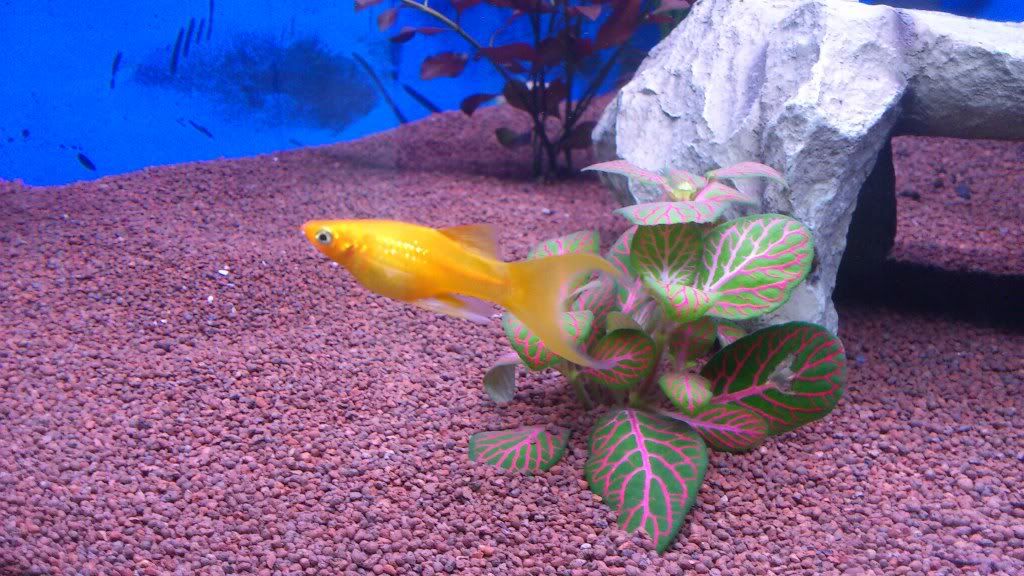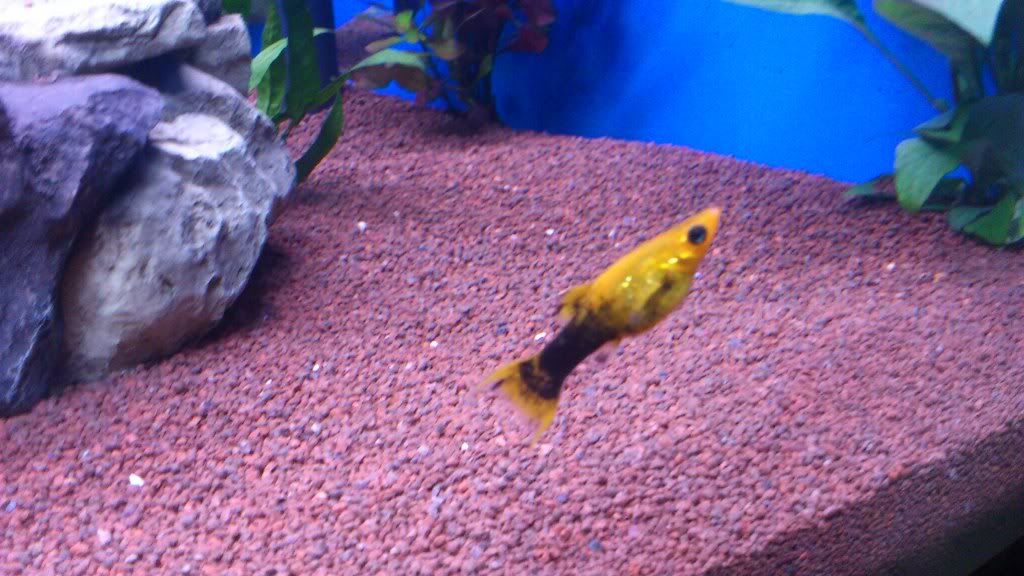phoenix2081
Fish Crazy
- Joined
- Jan 8, 2012
- Messages
- 210
- Reaction score
- 0
Hi I bought 4 mollies. I believe 2 are male and 2 are female as 2 have what appears to be a tube pointing to their tail fin, which apparently from reading is the penis. The other 2 just have a small fin.
The 2 with the small fins and which I think may be female (I am not 100% sure on sex as I have only been in the fish game for about 3 months) are getting massive stomachs of late. The clear yellow one just looks like it could pop. Do I need to get a hatchery ready, as I have no funds or space for a breeding tank, or have I mis read the situation.
The tank will have alot of wood and more plants in soon for young fry to hide in if neccessary.
Any help would be appreciated.


The 2 with the small fins and which I think may be female (I am not 100% sure on sex as I have only been in the fish game for about 3 months) are getting massive stomachs of late. The clear yellow one just looks like it could pop. Do I need to get a hatchery ready, as I have no funds or space for a breeding tank, or have I mis read the situation.
The tank will have alot of wood and more plants in soon for young fry to hide in if neccessary.
Any help would be appreciated.



